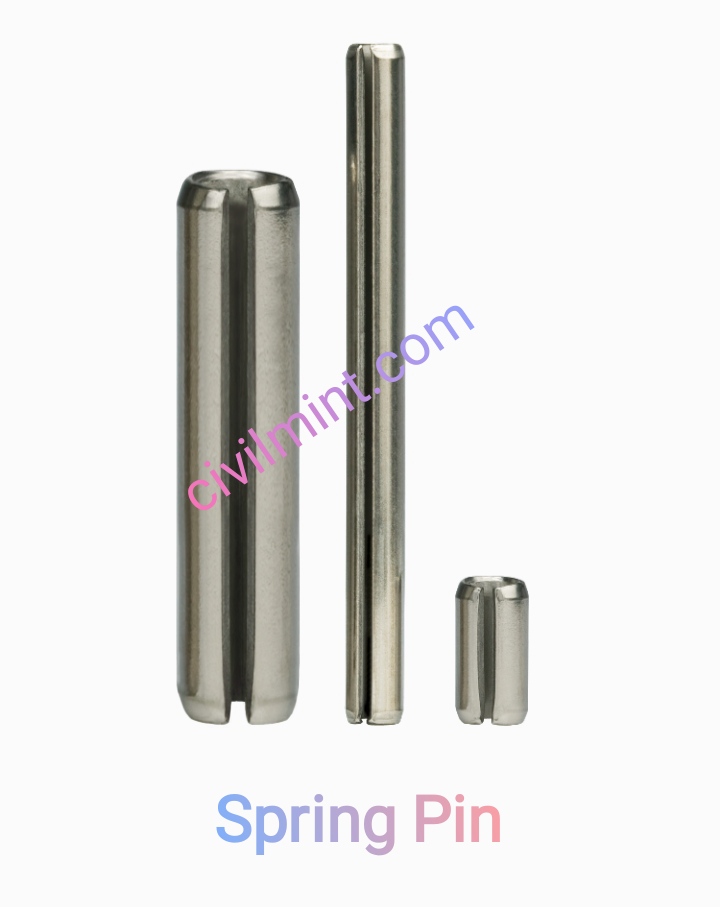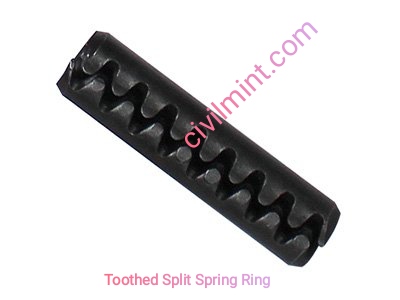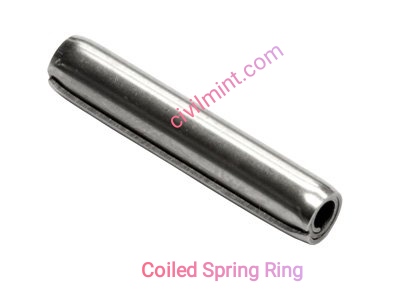Table of Contents
What is Spring Pin?
Spring pin is a hollow cylindrical tubular press fit fasteners with chamfered ends. Spring pin also called as slot pins, roll pins, or roll pins.
See the below image of spring pin.

These types of pin are made of diffrent materials such as alloy steel, carbon steel, and stainless steel with spring-like elastic properties. Spring pins are used as fixing elements for wiring, locating points, anti-friction surfaces, shafts or sleeves.
The spring action of the pin compresses it to match the diameter of the hole. Spring pins are considered self-retaining fasteners because the force exerted by the pin on the wall of the hole holds the pin in the hole.
Spring pins can be used to hold shafts as journals in journal bearings, or as a kind of key to attach one shaft to another, or through symmetrical hole locations to align the planes of mating parts.
Working Concept
The spring pin shrinks when it is inserted into the hole. Due to the spring-like nature of the pin, the diameter of the pin decreases slightly as it is inserted into the hole.
After installation, the elastic force returns the pin to its resting state, pushing the outer surface of the pin against the inner wall of the mating hole. The frictional force between the two surfaces holds the pen in place and prevents it from falling out or being accidentally dislodged.
Types of Spring Pin
1. Slotted Spring Pin
The slotted spring pin is a hollow single start molded pin with straight parallel slots. The width of the slot is narrower than the wall thickness of the pin to prevent snagging and nesting with other pins. The hollow design and slots give it a unique self-locking property. They are manufactured with a controlled outside diameter that is slightly larger than the hole in which they are mounted.

Compression during installation puts continuous pressure on supporting components. The spring action of the pin concentrates the pressure on the slot. The flexibility of slotted spring pins allows them to be inserted into holes with slightly greater tolerances than solid pins, thus reducing manufacturing costs.
2. Toothed Split Spring Pin
Toothed split spring pin are also hollow and similar to standard slotted spring pins. However, the slots on the serrated cotter pin have staggered teeth. These teeth are spaced so that they mesh when the pin is compressed. This orientation maintains the roundness of the pen while minimizing side-to-side movement in vibrating environments and preventing strikes.

Slotted Serrated Pins can serve a dual purpose in certain applications. If you want both a mechanical stop and a spring retainer. In addition, by arranging the slots at an angle of 90° to 180° to each other, you can double the shear strength of the slotted spring pin.
3. Coiled Spring Pin
The coil spring or coiled pin is a coiled shape with 2-1/4 coils of steel. They are manufactured in lightweight, standard and heavy-duty versions with different material thicknesses. The coiled design distributes the stress evenly across the cross section of the pin. Only coil pins use a coil spring design that promotes 270° surface contact with the host component.

Flexible design absorbs shock and vibration to prevent damage to opponents. Shear strength and flexibility are independent of force direction. Due to the pin’s coiled design, the compressive force causes the outer edge of the pin to rotate inward. When the pressure is released, the outer edge bends outward and returns to its original state. This cycle repeats countless times in high vibration environments.
Applications of Spring Pin
- Will not damage host material.
- Because of its elasticity, it fits into the hole without chafing.
- The spring pin can be doubled for increased shear strength.
- Can be used for both blind hole and through hole applications.
- Easy installation with hammer or automated equipment
